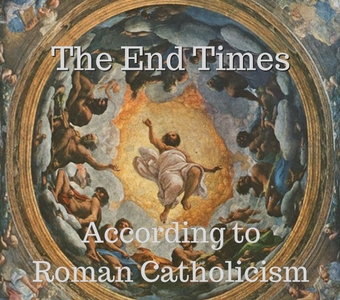THEOLOGY & APOLOGETICS
Roman Catholicism and the Rapture
By Sally Plemons


Single Page/Printer Friendly

The Roman Catholic Church does not teach or believe in what the majority of Bible-believing, evangelical, fundamentalists call the Rapture. The word "Rapture" was taken from the Latin word, rapturo, meaning "caught up." It basically comes from one particular verse in the Bible: "Then we who are alive, who are left, shall be caught up together with them in the clouds to meet the Lord in the air; and so we shall always be with the Lord" (1 Thessalonians 4:17). Roman Catholics declare this belief to be "fictional." As evidence, they pick apart the end times book series Left Behind, particularly the confusion of those left behind who wonder at what happened, which contradicts Revelation 1:7: "Behold, he is coming with the clouds, and every eye will see him, everyone who pierced him; and all tribes of the earth will wail on account of him. Even so. Amen."
Misinterpretations of the Rapture
Catholics have used the parable of the wheat and the tares (Matthew 13:24) as a blueprint for the end times, going so far as to say that God will remove sinners from the earth and leave His followers. In the story, a farmer planted good seed (true believers) and then his enemy planted "weeds" (unbelievers). After the crops matured, the weeds (tares) look exactly like the wheat (good seed) — no one can tell the difference, so God has to charge His angels to do the separating work. This parable does not give the order of the Rapture; rather it exposes the corruptive influence within the church, that of Satan's seed vs. God's seed. Sadly, both the lost and the saved within the church look, sound, and act just alike to the fleshly eye; however, the difference is in their heart condition, which only God can judge. At the end of time, He will separate the saved from the lost, and cast the lost into the fire — the lake of fire (Revelation 20:15) to put an end to sin for all time (Daniel 9:24).
In order to support their denial of the Rapture, Roman Catholics further state:
In the days of Noah, the saved were left behind on earth, Noah and his family. The unsaved were taken from this earth, and presumably didn't make it to heaven. Therefore, if the end of the world is similar to those days, as the bible says, being left behind may mean that you will still be here on earth to be Raptured later on. The ones taken may be like the flood victims in Noah's time, and die.Biblically speaking, it is true that the "saved" (Noah and his family) were left on earth, but protected through the deluge by the supernatural hand of God, and the "unsaved" of Noah's day died in the waters of the flood; however, their dead bodies were left on the earth, not "taken from this earth," where they decayed and returned to dust. While living, they were wicked, sinful, and unrepentant, therefore their spirits went into hell (Genesis 6:12-13; 1 Peter 3:18-20). The similarity between the Rapture and the flood isn't that the wicked will be taken and the good remain, but that people would be living life as usual right up until the moment that it occurs.
Replacement Theology
The Roman Catholic view of the end times is informed by two different false teachings. The first is "replacement theology" — that the church has replaced Israel in God's plan.
The Catholic thinking that the "good" will be left on the earth, and the "bad" will be taken off of it is not biblical. Noah presents a picture of Israel — the Jews. As Noah and his family were left on earth to go through the judgment, they were supernaturally protected from it by God, and thus will Israel be protected through the judgment of the Tribulation, as explained in Revelation 12:6: "Then the woman fled into the wilderness where she had a place prepared by God, so that there she would be nourished for one thousand two hundred and sixty days." Revelation 12 is all about Israel, as is easily proven by allowing Scripture to interpret itself; however, the Catholic Church misinterprets this chapter to reflect their replacement theology viewpoint, and support their denial of Israel's position in God's plan and purpose:
Revelation 12:1-2: These verses speak of Israel as the woman. She is pregnant with a "child"; that 'child' is the Messiah, Jesus, who was born of an Israelite virgin named Mary, but Israel did not become "the new Israel" — the church. The Catholic Bible interprets this passage very differently:The church (the bride of Christ) is pictured by Lot and his family, who were removed from the judgment by God, and whose deliverance could be compared to that of being "caught away" at the Rapture (Luke 17:28-29). Both Noah and Lot were saved through the judgment but in different ways, just as Israel and the church will be saved through the Tribulation judgment, but also in differing ways.The woman adorned with the sun, the moon, and the stars (images taken from Genesis 37:9-10) symbolizes God's people in the Old and the New Testament. The Israel of old gave birth to the Messiah (Rev 12:5) and then became the new Israel, the church, which suffers persecution by the dragon (Rev 12:6, 13-17); cf Isaiah 50:1; 66:7; Jeremiah 50:12. This corresponds to a widespread myth throughout the ancient world that a goddess pregnant with a savior was pursued by a horrible monster; by miraculous intervention, she bore a son who then killed the monster. [1.]

Continue to Page Two
comments powered by Disqus
Published 8-29-16

